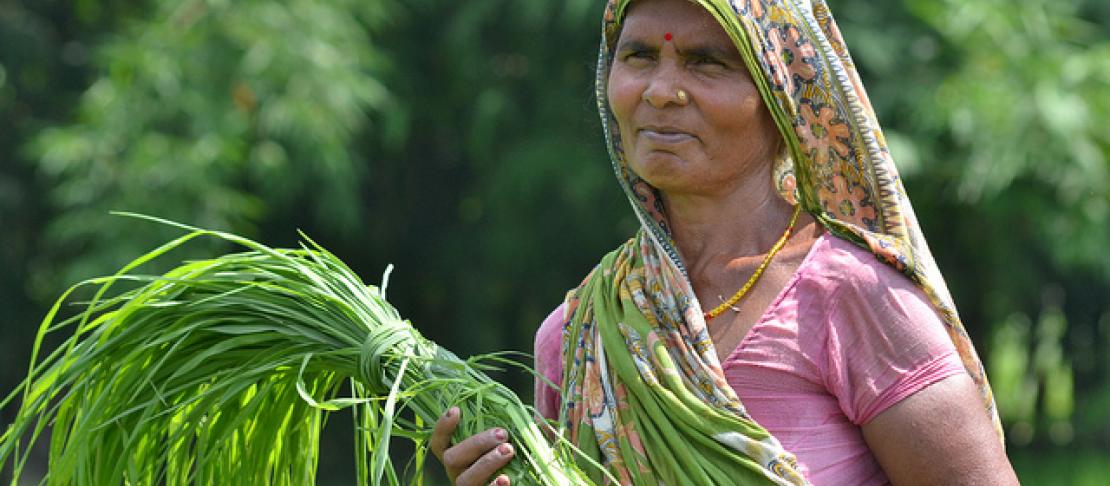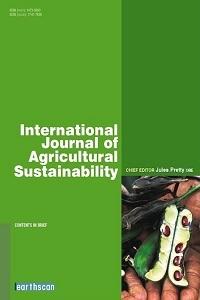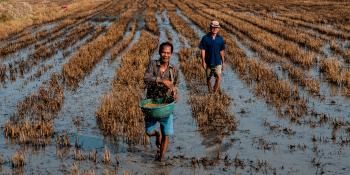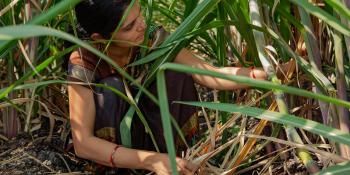Why women? Why now?

Investing in women is key to agricultural development and economic growth. Despite knowing this, governments and research institutions struggle with how to meet the needs of women, especially in regards to the growing threat of climate change. A recently published paper tackles this challenge, identifying research gaps and thoughts on where to go from here.
Women are key to addressing the challenge of food insecurity in low-income countries. We know that. What we don’t know is what to do about it. In collaboration with researchers around the world, we tackle this challenge in a new journal article, Addressing gender in agricultural research for development in the face of a changing climate.
Reviewing the same gender-focused research questions asked across many low-income countries, under the CGIAR Research Program on Climate Change, Agriculture, and Food Security (CCAFS), and drawing on different data sources and methodologies, the article shares both obvious, and not-so-obvious, findings.

First, women farmers, traders, processors, and sellers of agricultural and food products are not as resilient as they need to be to deal with a changing climate, on top of the other challenges they face every day. Second, they lack access to critical agricultural and climate-related information. Third, not enough of them are members of the kinds of formal and informal groups and institutions that could help them work together on complex food production-related challenges and make the kinds of transformative changes needed to respond to food security challenges. Fourth, most women still lack access and rights to natural and productive resources, such as land, water, seeds, and seedlings. Fifth, they have limited voice and decision-making authority where it could make a big difference, as they often have unique knowledge of plants, trees and water sources, among other things.
While the studies reviewed in this article consistently identified these broad barriers across a range of sites, it was not a big surprise to find that the extent to which specific factors hinder women’s involvement in climate-smart agriculture depends largely on the local context. Given the geographical and agricultural system diversity found in the studies reviewed, the results are able to provide guidance as to which factors are key to consider in different regions and systems.
Perhaps more of a surprise was the discovery in some sites that, when women have knowledge, they do adopt the kinds of new agricultural practices that can help make their families better off now, and more resilient and able to deal with a changing climate in the future. This was very encouraging. Less encouraging was the finding that very few women anywhere are harvesting rainwater or investing in soil and water management, food storage, or planting trees on farms to help them deal with increasingly unpredictable weather patterns. More men, but still not a majority, are adopting soil and water conservation practices and agroforestry in response to perceived changes in their climate.
The study also highlights remaining research gaps, and identifies future research areas and potential approaches. For the first time, across multiple sites and environments, we have survey data asking men and women within a household the same questions regarding what farming practices, particularly those considered to help them become more resilient to climate change, are preferred by men compared to women. However, we still have very little evidence as to how the costs and benefits of different climate-smart agricultural practices are distributed among members of the same household, or to what extent women’s engagement in projects and programs are aimed at improving climate resilience outcomes.
This synthesis of where we are currently at, in regards to addressing these complex challenges, also highlights a somewhat sobering conclusion. Identifying the barriers faced by women farmers – in terms of their ability to choose climate-smart options that meet their needs and preferences – does not automatically provide insights into how these barriers can be overcome across various local contexts. Comprehensive quantitative intra-household surveys, such as those reviewed, are necessary but insufficient on their own if we want to come up with solutions and not just diagnose the problem.
Carrying out rigorous participatory and largely qualitative work that grounds the quantitative data within local contexts, however, adds considerable value. More action research that promotes joint learning between researchers and the communities in which they work is needed. And, surely, it is timely to call for new methods of collecting data (e.g. relatively few but appropriately targeted questions to many respondents on their cellphones) over longer periods of time in order to understand varying needs and how well they are being met.
Which brings us back to a, perhaps, unsurprising key conclusion: There is increasing empirical evidence that promoting gender-transformative, climate-smart solutions increases the likelihood of achieving not only positive gender-related outcomes, but also sustainable poverty reduction goals. Achieving such objectives requires greater collaboration among research and development organizations. It means that implementing partners will have to widely and easily share knowledge, tools, and approaches. Capacity on gender issues is lacking, and must be supported and strengthened within government agencies and others working on agriculture and food systems. This will ensure that future programs, projects, strategies and investments better address climate change concerns while meeting the needs of women and other vulnerable segments of society.
‘Designing with gender in mind’ is also a key take-home message from this article. It is too late if research and development initiatives, projects, programs, tools, policies, interventions, and monitoring and evaluation strategies are designed without asking about the key gender gaps and coming up with potential strategies and actions to address them right from the outset.
Download the article: Kristjanson, Patricia; Bryan, Elizabeth; Bernier, Quinn; Twyman, Jennifer; Meinzen-Dick, Ruth; Kieran, Caitlin; Ringler, Claudia; Jost, Christine; Doss, Cheryl. 2017. Addressing gender in agricultural research for development in the face of a changing climate: where are we and where should we be going? . International Journal of Agricultural Sustainability 1-19 p.
Patricia Kristjanson is a Senior Scientist at ICRAF.



